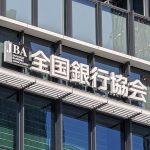The New NISA (Small Investment Non-Taxable System), central to Prime Minister Kishida’s “Asset Income Doubling Plan,” is launching in January 2024. It offers a “Monthly Accumulation Investment Frame” for investment trusts and a “Growth Investment Frame” for stocks and investment trusts. With generous annual limits—¥1.2 million for Monthly Accumulation and ¥2.4 million for Growth, a lifetime cap of ¥18 million (¥12 million for Growth)—New NISA can cater to diverse investment needs.
For asset management firms, not having their investment trusts qualify for New NISA can be a blow. This fear has led to a trend of exploring loopholes, resulting in what some might call “hidden actions.”
To qualify for New NISA’s Growth Investment Frame, three exclusion criteria exist: (1) trust periods under 20 years, (2) monthly distribution, and (3) non-hedging derivative use. Among these, monthly distribution, popular among seniors, was excluded as it erodes principal and doesn’t align with New NISA’s long-term goals. Hence, there’s a push to register bi-monthly distribution investment trusts as Growth Investment Frame products. However, this approach faced criticism, particularly Rakuten Investment Trust Investment Advisor.
Rakuten Investment Trust submitted two bi-monthly distribution trusts as Growth Investment Frame products. Although one distributes dividends in odd months and the other in even months, owning both replicates monthly distribution characteristics. This led to suspicions of “regulation circumvention.” Rakuten Investment Trust withdrew the application for even-month dividends, but similar attempts may continue.
Nomura Asset Management is changing terms for two high-dividend stock trusts, converting them from monthly to bi-monthly distribution to qualify for New NISA. Both invest globally and distribute dividends alternately. This raises suspicions of catering to “monthly distribution devotees.”
Applications for investment trusts using derivatives, an exclusion criteria, as Growth Investment Frame eligible products have been made. Five Star Investment Trust Investment Advisor’s “Nikkei 225 Neutral Fund” combines stock purchases with Nikkei futures sales, implying derivative use. However, they consider futures sales purely for hedging.
The eligibility of the Growth Investment Frame is determined by asset management firms. Tax authorities may label non-compliant trusts “New NISA Non-Qualified,” risking taxation. The quest for loopholes could shake the system’s core.
Change in New NISA: What Sets It Apart from Current NISA?
- Unlimited Tax-Free Holding: Unlike current NISA, both Tsumitate and Growth Investment Frames in New NISA offer unlimited holding periods.
- Permanent NISA Account Opening: New NISA offers a permanent account opening period, eliminating time constraints for starting investments.
- Increased Tax-Free Limits: New NISA raises the tax-free limit to ¥1.8 million (¥1.2 million for Growth). Reinvesting product proceeds reactivates the tax-free limit.
- Expanded Annual Investment Cap: New NISA allows a maximum annual investment of ¥3.6 million by combining Tsumitate and Growth Investment Frames.
- Dual Investment Frames: New NISA enables the simultaneous use of Tsumitate and Growth Investment Frames, offering flexibility not found in the current NISA system.












Leave a Reply